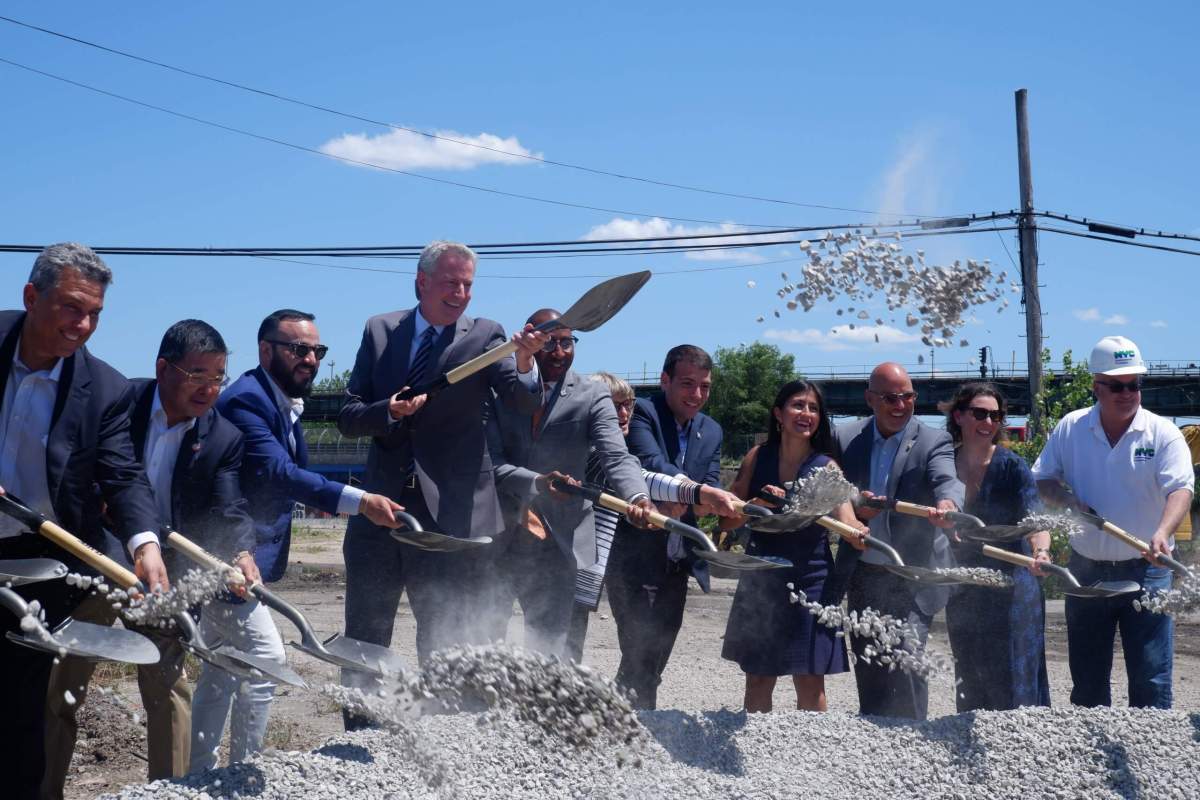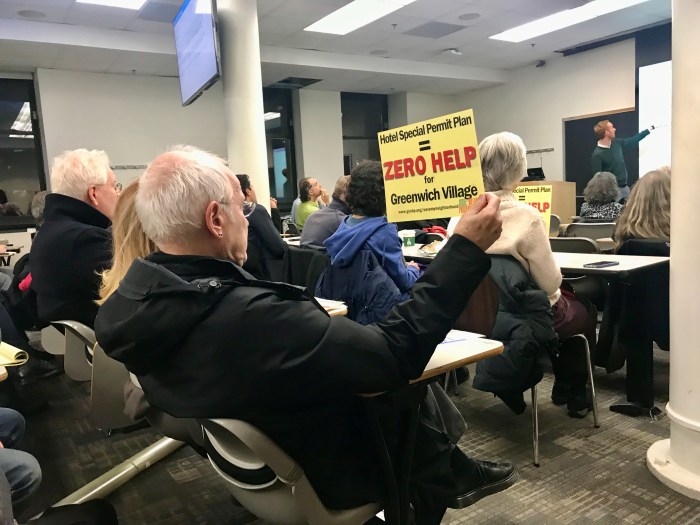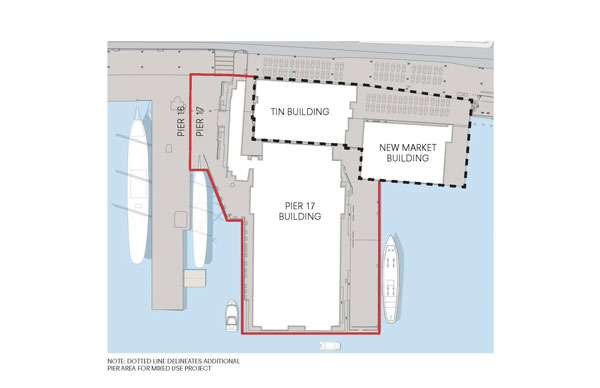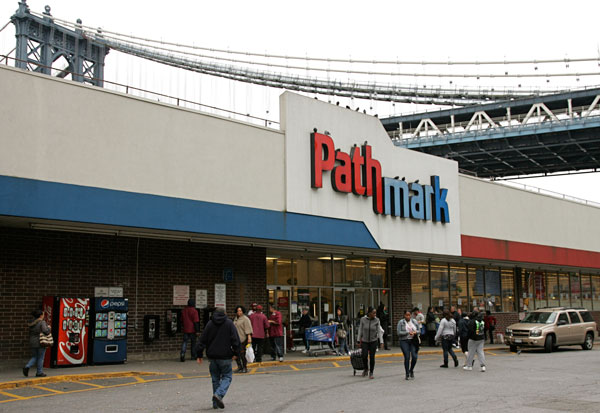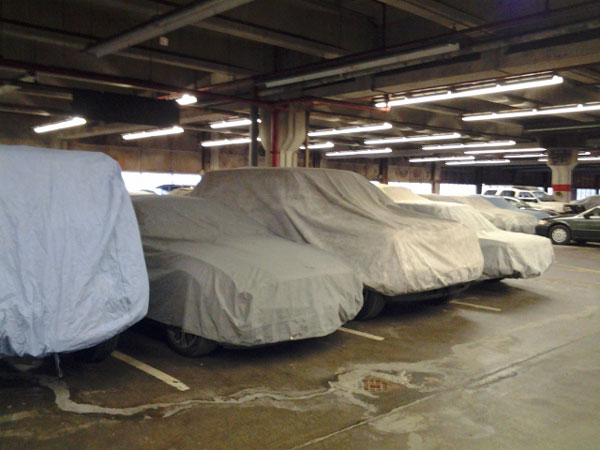The city on Wednesday, June 16, officially broke ground on the environmental cleanup needed for the Willets Point redevelopment in Queens, where developers will eventually build 1,100 below-market-rate housing units and a school atop old industrial land next to Citi Field.
“For 1,100 families there’s going to be a home — 1,100 families are going to have a home here in Queens that they can depend on,” Mayor Bill de Blasio said at the ground-breaking ceremony. “It means a family that for decades know a place to lay their head, a place to bring up their children, they’ll have peace, they’ll have security.”
The 6-acre tract at the corner of Roosevelt Avenue and Seaver Way will be transformed into a mixed-use neighborhood with three residential buildings, a 650-seat public school, an acre of open space, 25,000 square feet of retail space, a 3,000-square-foot community facility space.
“This is groundbreaking, this is historic,” said the area’s Councilman Francisco Moya. “This represents a dramatic improvement in this area, it will improve the lives of 1,100 families and seniors. This represents an opportunity for 650 children in the district to not go into any overcrowded schools anymore. This represents bringing publicly accessible open space, new jobs, and so much more — and it’s only the first phase.”
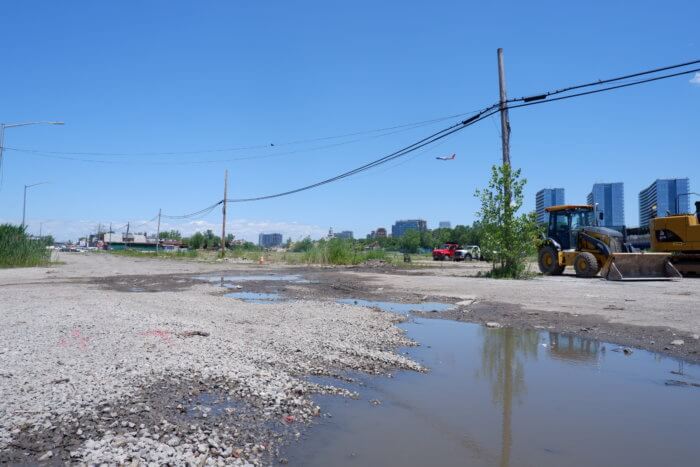
The project is being done by a pair of developers under the moniker Queens Development Group (QDG), which includes Stephen Ross’ Related Companies — the builder behind Hudson Yards in Manhattan — and Sterling Equities, a real estate company that owned the Mets until selling the team to billionaire hedge fund manager Steve Cohen last fall.
“I’ve been looking out at this acreage for many many years, only hoping that there’d be a day like this that we could all celebrate the true start of this project,” said Sterling Equities partner Richard Browne.
Construction on the residential buildings and the schools won’t start until 2024, as the developers will have to first clean up the toxic soil from decades of pollution from the auto body shops that dominate the corner of land at the mouth of the Flushing Creek, starting this summer.
Construction workers will then build new streets, sidewalks and utilities, such as a sewage system, which is slated to happen in 2022.
Plans to redevelop Willets Point date back 15 years to the administration of then-Mayor Michael Bloomberg, and officials have repeatedly tried to reimagine the 23 acres of city-controlled land sandwiched between the neighborhoods of Flushing and Corona.
The current plan for the six-acre site — roughly twice the size of the baseball field next door — is dubbed Phase 1 and real estate bigs hope this finally will jumpstart more redevelopment of Willets Point.
“We start cleaning this land and you’re going to see a lot of magical things happen and the momentum will continue,” Browne said.
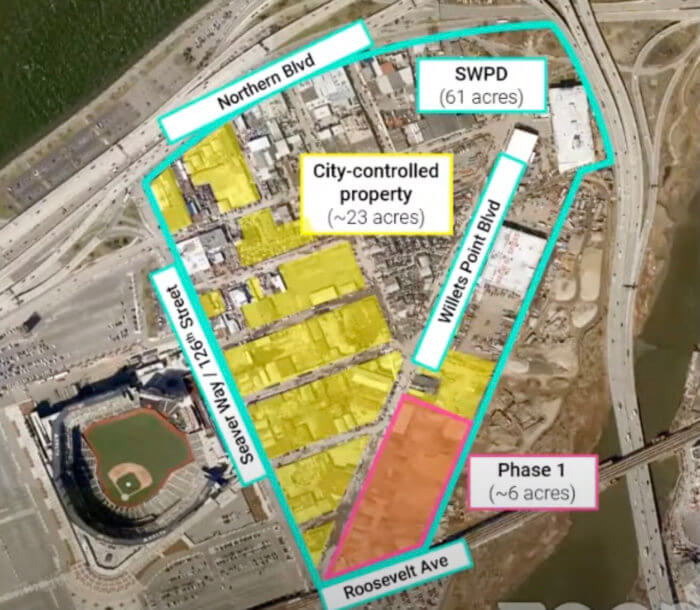
QDG leased the land from the city for 99 years, according to the Economic Development Corporation, the agency managing the project, and Queens politicians and community board reps signed off on the agreement in May.
EDC spokeswoman Shavone Williams declined to provide the cost of the project.
Under the agreement with EDC, out of the 1,100 homes, 220 of the units will be earmarked for seniors and another 99 will be for families who were formerly homeless transitioning out of the shelter system.
The remaining 781 units will be set aside for six different income groups ranging from 30-130% of the federally-designated Area Median Income (AMI), the Astoria Post reported. About 55% of units, including those for seniors, will be for those making less than 60 percent of the AMI, which in 2021 reflects a family of three making $64,440 a year.
However, less than half of all units, or 45% which is 495 apartments, will remain permanently tied to AMI, according to EDC.
How long the remaining 55% — or 605 units – remain price-regulated before they go onto the free market is still up for negotiation with the developers, according to a spokesman for the city’s Department of Housing Preservation and Development (HPD), which sets the price ranges.
“The other affordable units will be negotiated and those terms will be in the regulatory agreement for a prescribed period of time and, at the end, its affordability is renegotiated,” said Jeremy House.



